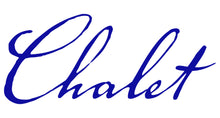Pruning Blog 2023
March is PRUNING Month!
- Woody plants – trees and shrubs are easy to prune now because structure can be seen with no leaves, focus on damaged branches or diseased branches
- Deciduous plants now – evergreens later in the early summer

The only mandatory reasons to Prune:
- Diseased wood
- Damages wood
- To encourage flowering or fruiting - “manage crop”, produce “new wood”
- To create screens or hedges
Only prune with a purpose:
- When planting or transplanting
- To train
- To control size, appearance and health
- To control production of fruit & flowers
- To rejuvenate
- To create a barrier
Tree Anatomy

- trunk, scaffold branch
- lateral branch
- spur
- water sprout
- sucker
Use bypass pruning shears only on living wood
- Pruning shears (hand held)
- Lopping shears – bypass vs. anvil
- Pruning saw (if over 1.5 inches in diameter)

Make pruning decisions based on:
What - Why - When - Where - How
Why?
- Removal of damaged plant parts
- Removal of errant growth
- Increase stem and foliar density
- Stimulate flowering & fruiting
- Create unusual shapes and forms
- Stimulate new growth
- Protect people and property

When?
- Correct timing for pruning of FLOWERING trees and shrubs is primarily dependent on WHEN the plant produces its flowers.
- EASY time for pruning is when the plant has no leaves…. when it is dormant.
- Plants that produce flowers on OLD WOOD carry their flower buds on their branches over winter and should be pruned AFTER FLOWERING
- Plants that produce flowers on NEW WOOD (current season’s growth) should be pruned BEFORE NEW GROWTH BEGINS
If you are willing to sacrifice flowers for one season, prune when it is EASIEST

Where?
Basic pruning cut –
- ¼ inch above an outward facing bud
- Cut should be slanted to drain water off the cut surface (never flat and perpendicular to the ground)

Large Branch Removal – 3 cut technique
- Undercut 1/3 to ½ way through thickness of branch
- Topcut 2-3 inches further out along the branch, so the weight of the branch extension causes the branch to drop to ground detached from bark
-
Final cut removes stump at “branch bark collar”
Branch Bark Collar - Dr. Shigo research changed and shook world of Arboriculture
- Diagram shows Flush cut 1 year after pruning showing dying tissue above and below area where branch collar was cut away
- When branch bark collar remains the wound heals and the scar disappears
- Proper wound scar – called a “kiss” (see below)

Tree Paints and Sealers - (not recommended now, because the sealers trap fungus and bacteria underneath causing more damage than air drying)
Pruning dormant shrubs – Follow the rule of 3
- Every 3 years
- Cut 1/3 of the length of all branches
- Remove 1/3 of the number of the largest upright stems or branches

By following these basic guidelines, your plants will be much happier and so will you!

Jennifer Brennan
Jennifer Brennan is the Horticulture Information Specialist, advising and coaching gardeners at Chalet for over 30 years.

